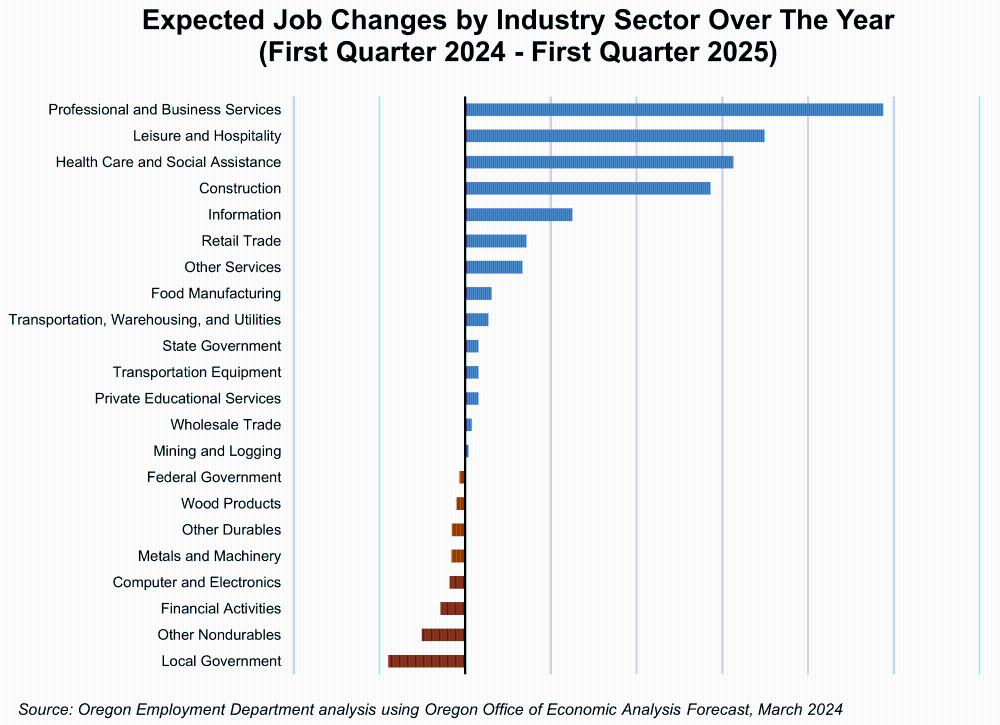Slow Job and Labor Force Growth: 2023 in Review
March 5, 2024Oregon continued to net job gains in 2023. However, the pace of employment growth slowed considerably and turned negative in the second half of the year. Oregon’s labor force gains were also relatively slow in 2023. Unemployment declined in the early part of the year, then closed out 2023 at nearly the same level as one year before.
Downshift in Job Growth
During the first half of 2023, Oregon employers added 20,200 jobs to nonfarm payrolls. For the last six months of the year, employment declined by 6,500 jobs. That meant Oregon had a net gain of 13,700 jobs over the year, a growth rate of 0.7%. In January 2023 alone, Oregon employers added 13,700 jobs to nonfarm payrolls. The monthly job gains and losses from February through December offset each other, resulting in zero net gain for the remainder of the year.
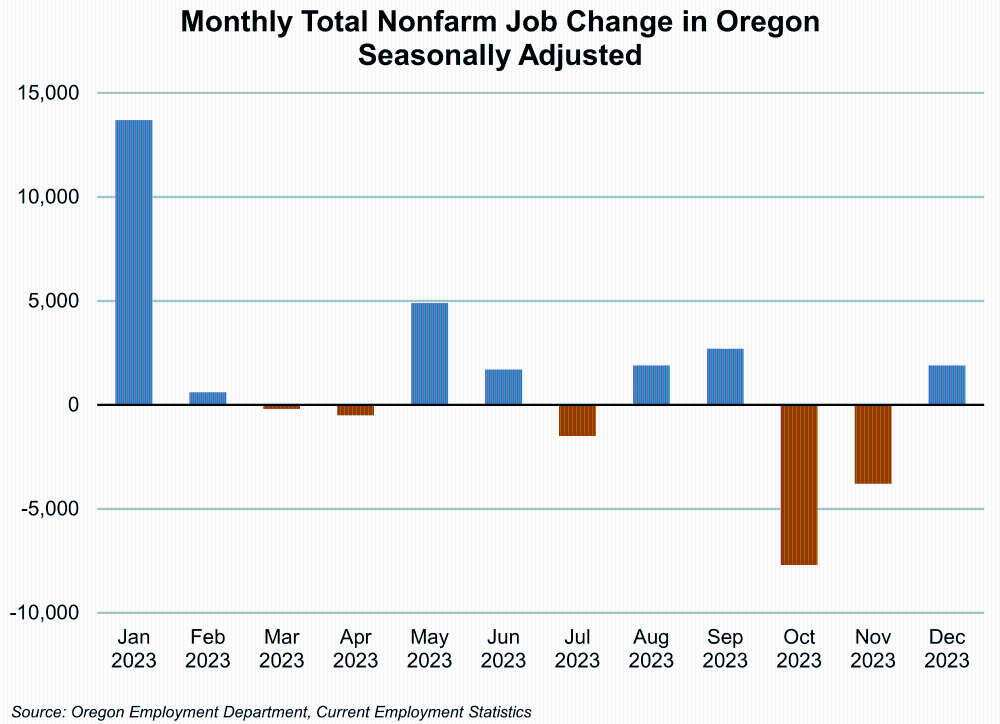
Employment gains were not only concentrated in one part of the year, they were also concentrated in just a few sectors. Private health care and social assistance added 15,400 jobs (+5.6%) in 2023. Other sectors with large job gains over the year included local government (8,700 jobs or 3.8%), and leisure and hospitality (2,900 jobs, or 1.7%).
Some sectors of Oregon’s economy had job losses in 2023. The most notable was manufacturing, which shed 6,600 jobs (-3.4%) over the year. Most of those losses occurred in durable goods manufacturing (-4,800 or -3.5%). Professional and business services declined by 5,100 jobs (-1.9%) over the year, with losses concentrated in administrative and waste services. Administrative and waste services includes temporary help services, building and grounds maintenance, and call centers, among others. Oregon’s retail trade sector lost 4,400 jobs (-2.1%) over the year.
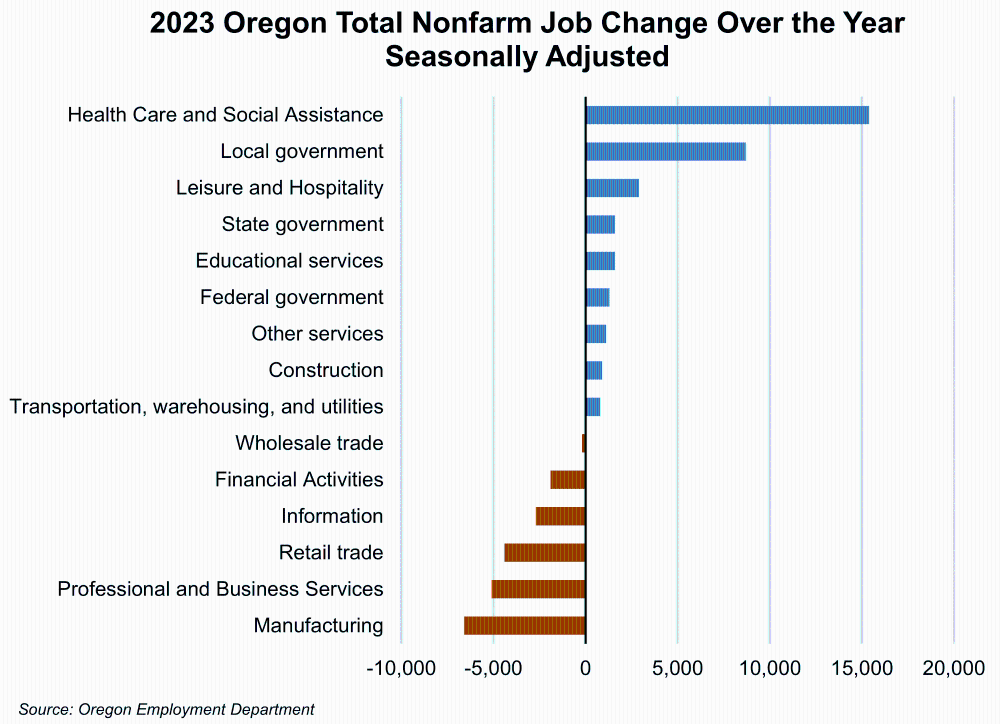
Leveled off Labor Force
Oregon’s labor force gains were also relatively slow in 2023. Between December 2022 and December 2023, the state’s labor force rose by 13,000 people, an increase of 0.6%. Most of those gains (11,000) occurred in the last six months of the year.
There are two main parts of Oregon’s labor force. The household measure of those employed includes Oregonians with payroll jobs, the self-employed, and those doing some sort of contract or gig work. The unemployed includes those who do not currently have a job, but have been actively seeking work in the past four weeks, and are available and able to take a job if it’s offered to them.
In the first half of 2023, employment in the labor force grew by 13,000, then added just another 1,000 for the rest of the year. The labor force reversal occurred in unemployment, which fell by 11,000 in the first half of 2023, then grew by 10,000 in the second part of the year.
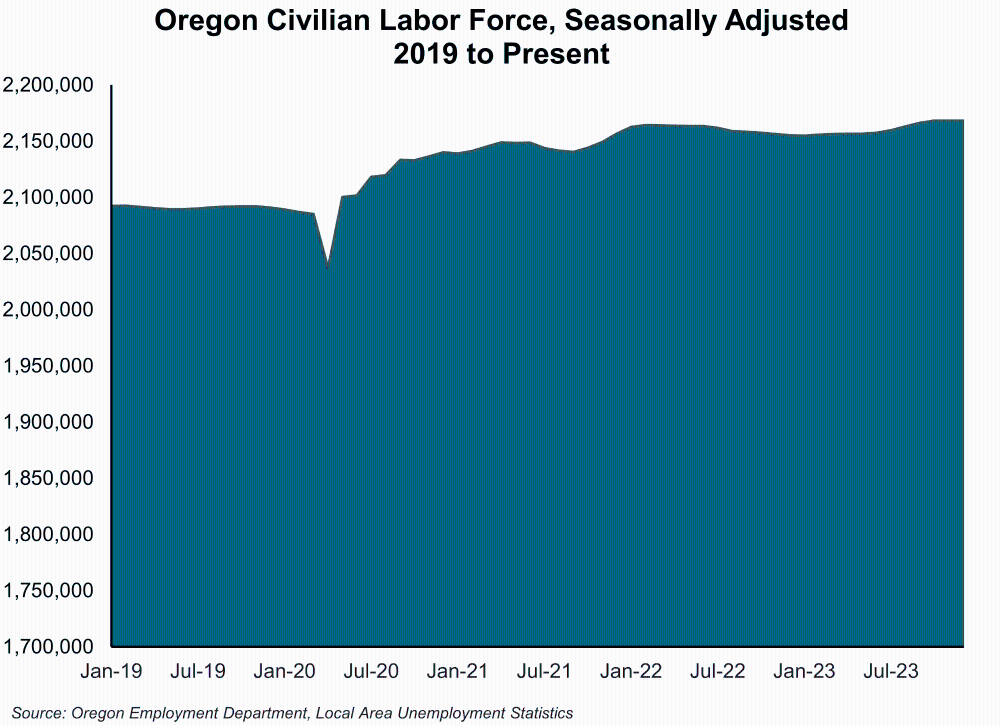
The combination of employment gains and declining unemployment early in the year drove Oregon’s unemployment rate lower during the first half of 2023. Oregon’s unemployment rate fell from 3.8% in January to 3.4% in April and May. That’s low by historical standards: Oregon’s lowest unemployment rate going back to at least 1976 is 3.4%. Oregon has only reached that low rate four times: in November and December of 2019, and twice again in 2023.
As the number of unemployed Oregonians rose slightly in the second half of 2023, so did the unemployment rate. Oregon’s unemployment rate crept back up to 4.0% by December 2023.
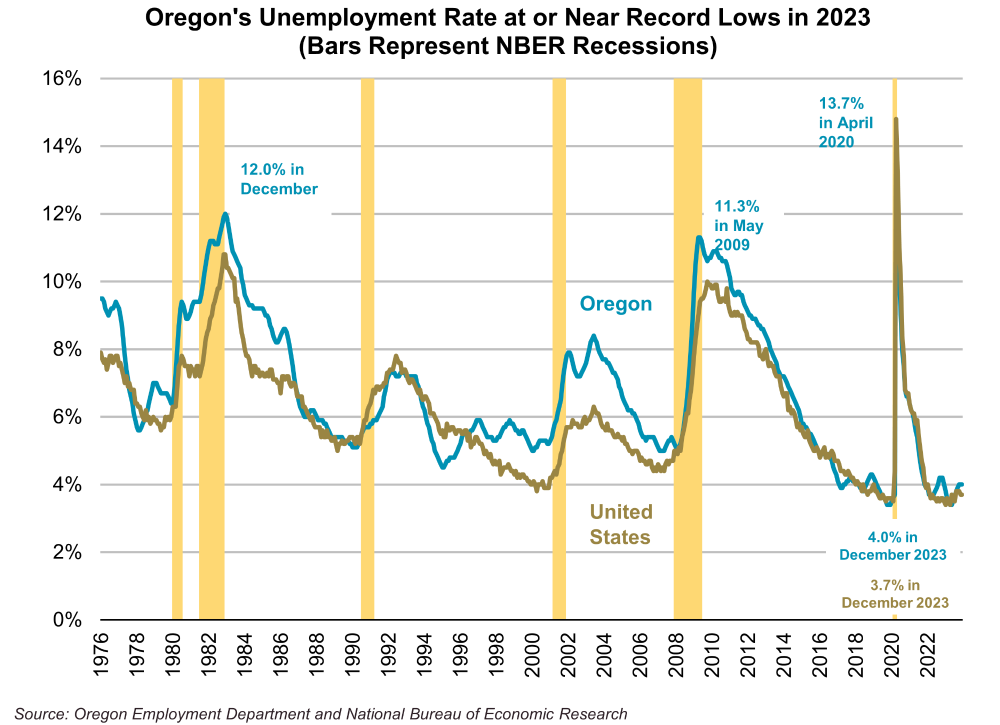
Although Oregon saw fluctuations in employment growth and labor force trends during 2023, the state ended the year with relatively similar trends to the U.S. Oregon’s unemployment rate was 4.0% in December 2023, compared with 3.7% for the U.S. This was a slight uptick for both, after hitting a low of 3.4% in the middle of the year.
Both Oregon and the U.S. saw slowing but continued job growth over the year. Oregon’s total nonfarm gains of 0.7% were slower than the U.S. job growth rate (1.9%, or 3.1 million jobs), and with more weakness in the later months of the year.
Continued Slow Growth Ahead
Looking at the year ahead, the Oregon Office of Economic Analysis (OEA) forecasts ongoing, slow job growth. OEA expects Oregon employers to add 15,800 jobs to nonfarm payrolls between the first quarters of 2024 and 2025. That’s a growth rate of 1.0%, or an average gain of 1,300 jobs per month. This would be slow growth by historical standards, although a slight uptick from 2023, which marked the slowest job growth over the year in Oregon during an economic recovery or expansion since at least 1990.
The largest employment gains by the first quarter of 2025 are expected to occur in professional and business services (+4,900 jobs), leisure and hospitality (+3,500), and health care and social assistance (+3,100). OEA anticipates small job losses occurring in government; some areas of the manufacturing sector; financial activities; and federal government.
